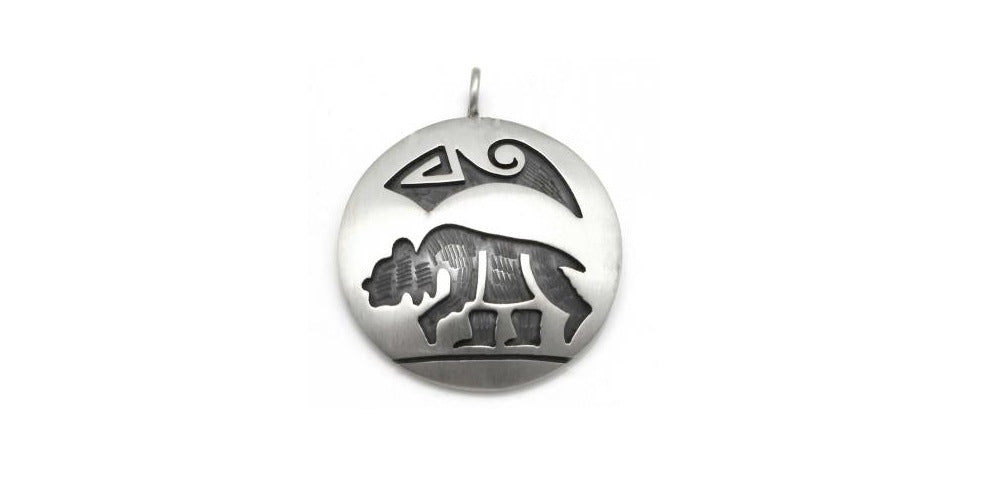
Indian Traders is delighted to showcase a vast catalogue of genuine Hopi Indian silver jewelry in our online store. We work directly with local Hopi silversmiths from the Hopi Reservation, and every sale on these unique pieces supports the Native American communities to which these artisans belong.
Who Are the Hopi?
The Hopi, or “Peaceful Ones”, are a Native American Nation of the US Southwest. Today, they live primarily on the Hopi Reservation of northeastern Arizona. The Hopi Reservation is itself entirely surrounded by the Navajo Reservation.
The Hopi’s ancient ancestors migrated to the US southwest over thousands of years, and the Hopi were first encountered by Europeans in the 1500s when the Spanish arrived in the region. They were among the tribes referred to at that time as Pueblo People, based on their style of dwelling (adobe villages) and the Spanish word for “village”.
What Makes Hopi Jewelry So Special?
Creative and spiritual, the Hopi are considered to be the oldest Native American tribe extant today. They are renowned for their mastery of silversmithing and their unique overlay method of jewelry making.
They were introduced to the art of silversmithing by the Spanish settlers in Mexico and the southwest in the late 1800s, and they themselves then passed the knowledge of working with silver in this way onto other neighboring tribes including the Navajo and the Zuni.
Many Hopi men traditionally became silversmiths and this is a way many Hopi today express themselves creatively and support themselves economically.
Silver Overlay
Hopi jewelry is unique for its sterling silver overlay technique. This style is a signature of Hopi silversmithing technique and it sets Hopi work apart from the jewelry designs of other tribes.
What is silver overlay?
Two layers of silver cut to the same size and shape are used, and the design is traced onto the upper layer and then carefully and precisely cut to shape by hand. This can be extremely time-consuming and painstaking work. It is then soldered onto the lower layer of silver. The design on the lower layer is intricately textured and oxidized to a deep black color, and the end result is a single piece of silver with a distinctive Hopi design.
The Hopi silver overlay technique became characteristic from the 1930s.
Hopi Symbolism
The Hopi traditionally use symbols to provide encouragement and protection – from bear paws to Kokopelli; eagles to feathers.
When used in Hopi jewelry pieces, the following symbolism applies:
- Bear Paw – inner strength
- Bear – leadership and outward physical strength
- Kokopelli – fertility
- Eagle – prayer carrier
- Feathers – creativity
- Arrowhead – adventure
- Buffalo – peace
- Dreamcatcher – halts nightmares
These symbols used in Hopi jewelry can be simple or intricate and may be symbolic or realistic.
Gemstone Pieces
Though it’s not as common to see gemstones used in Hopi jewelry (and they are much more commonly a feature of Navajo and Zuni pieces), the Hopi believe that turquoise is excreted by the sacred lizard and that it gives strength when carried as a talisman, as well as having the ability to hold back floods. It is a powerful stone.
Other gemstones which may occasionally be used include red or pink coral (protective and soothing), onyx (calming and it eliminates negativity), lapis lazuli (wisdom, fortitude, and psychic awareness), and others.
What Makes Hopi Jewelry Stand Out?
While there are some similarities between Hopi jewelry and that of the Navajo and Zuni, Hopi pieces use minimal gemstones in their work. The distinctive inlay designs take pride of place in these pieces.
Hopi Indian silver jewelry is a high-quality, beautiful art form that depicts the rich culture, history, and lore of the Hopi Nation.
The necklaces, bracelets, earrings, and other stunning pieces are distinctive and instantly recognizable as being of Hopi origin.
Navajo and Zuni designs are more inclined to use “inlay” techniques, whereby a gemstone or other material is embedded into the silver, sometimes flush with the silver surface and sometimes sitting above it.
For the Navajo, the silver jewelry is often designed around the feature stone’s natural shape. Navajo inlay work tends to be bolder than Zuni work, which characteristically is more intricate and features precise geometric patterns and channels with stones cut to fit the silver designs. Navajo favor turquoise, while Zuni traditionally use turquoise, jet/onyx, red coral, and Mother of Pearl to create vibrant pieces.
(Other Pueblo artists, including the Santo Domingo, are renowned for hand-rolled and cut beads strung onto necklaces. These are made from turquoise, shell, and other stones.)
Indian Traders proudly carries stunning and meaningful merchandise from silversmiths including Anderson Koinva, Darren Seweyestewa, Hallie Honanie, Kevin Takala, and several others.
Explore our range of Hopi jewelry here.
